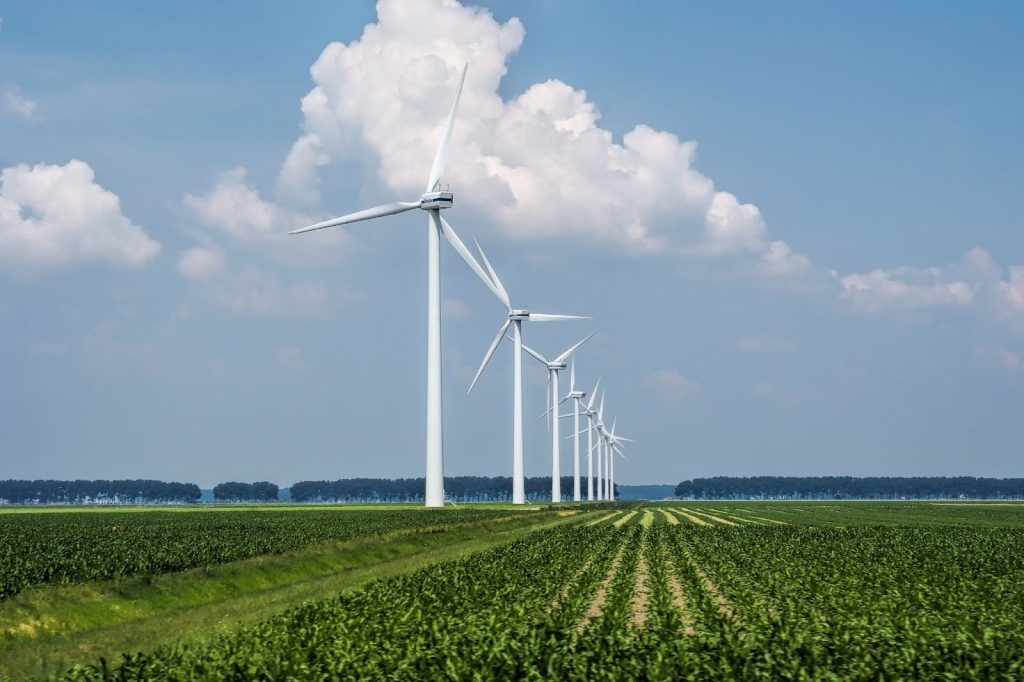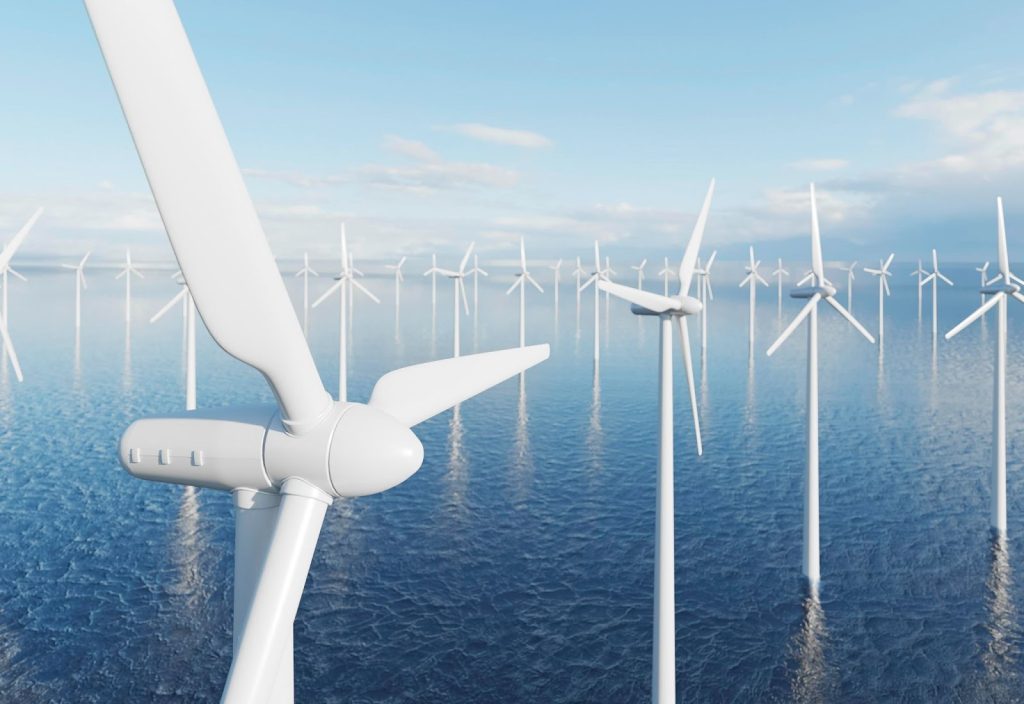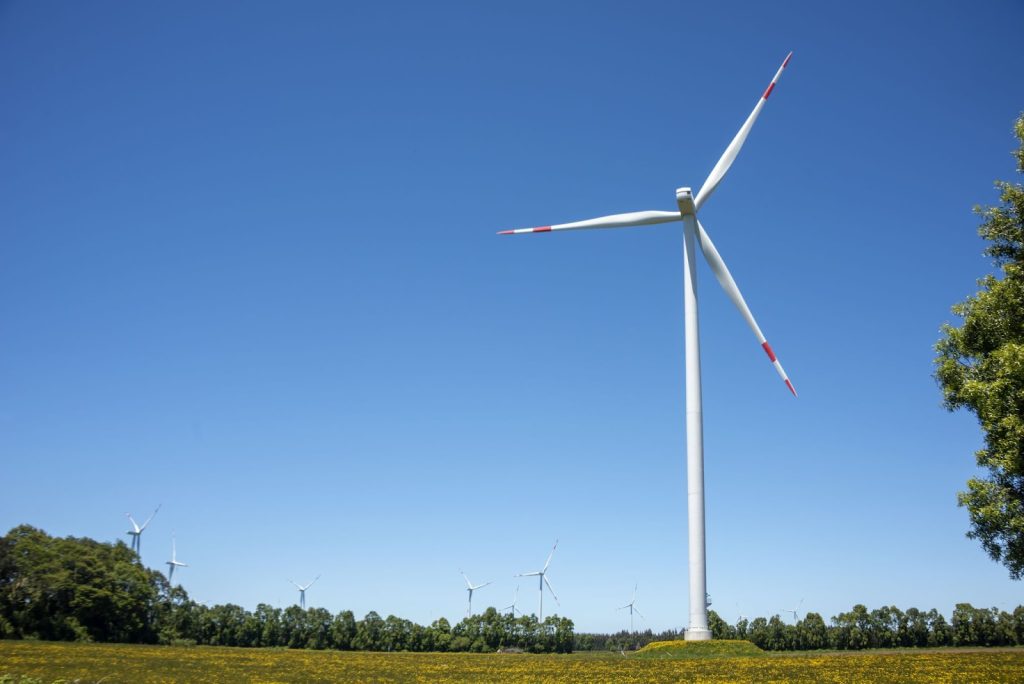Types of Wind Turbines: Exploring Vertical & Horizontal Axis Wind Turbines
Key Highlights:
- Two Main Types of Wind Turbines: Horizontal-Axis Wind Turbines (HAWTs) and Vertical-Axis Wind Turbines (VAWTs), each with unique structures and applications.
- Core Principle: All wind turbines convert wind’s kinetic energy into electricity using a rotor, shaft, and generator system.
- HAWTs: Efficient, large-scale, and commonly seen in rural or offshore wind farms. Require steady wind direction and more space.
- VAWTs: Compact, versatile, and ideal for urban or variable-wind settings. Easier to maintain but generally less efficient.
- Subtypes Explained: From upwind/downwind HAWTs to Darrieus and Savonius VAWTs—each has advantages tailored to specific use-cases.
- Real-World Relevance: From powering cities to fitting on rooftops, wind turbines are evolving with smarter technology and sustainable design.
- Opportunities for Innovation: Advancements in materials, design, and smart controls are shaping the future of wind energy.
Types of Wind Turbines: Exploring Vertical & Horizontal Axis Wind Turbines

As the world accelerates its shift toward sustainable energy, wind power has emerged as one of the most promising and scalable sources of clean electricity. But how exactly do wind turbines work, and what sets one type apart from another?
In this guide, we’ll explore the two main categories of wind turbines: Horizontal-Axis Wind Turbines (HAWTs) and Vertical-Axis Wind Turbines (VAWTs). Whether you’re a student interested in renewable energy, a professional exploring green infrastructure, or just curious about the technology shaping our energy future, this breakdown will bring clarity and inspiration.
How Do Wind Turbines Generate Electricity?
At their core, wind turbines transform the kinetic energy of wind into electrical power, enabling homes, schools, factories, and cities to run on clean energy. Here’s how it works:
The Basic Principle
- Wind moves the turbine blades, transferring kinetic energy.
- This rotates a central shaft connected to a generator.
- The generator converts the mechanical energy into usable electricity.
This core mechanism is similar across all types of wind turbines, but the structure and orientation of turbines significantly influence how efficiently this energy conversion happens.
Horizontal Axis Wind Turbines (HAWTs)

When most people think of wind turbines, HAWTs are what come to mind — the towering structures dotting coastlines and plains with large, rotating blades.
🔧 How They Work
HAWTs have a rotor shaft that spins around a horizontal axis, and the blades must face into the wind. A yaw system is often used to automatically adjust the direction.
Key Features
- Mounted on tall towers to harness high-speed winds.
- Typically have two or three long blades made of lightweight composite materials.
- Positioned in open spaces, such as hillsides, coastal areas, or offshore platforms.
Advantages
- High efficiency at large scales.
- Proven, mature technology with decades of optimisation.
- Ideal for consistent wind conditions.
Considerations
- Require ample space and steady wind directions.
- Noise and visibility can be issues in populated areas.
- Installation and maintenance at height can be cost-intensive.
Educational Insight
Many engineering programs study HAWTs in detail due to their prominence in utility-scale energy production. Understanding how aerodynamics, mechanical systems, and control mechanisms interact is crucial for innovation in this field.
Vertical Axis Wind Turbines (VAWTs)

Source: Windcycle
VAWTs are less commonly seen but increasingly relevant, especially in environments where wind direction is variable or where space is limited.
How They Work
The rotor shaft is vertical, and the blades rotate around this axis. Unlike HAWTs, these turbines do not need to face the wind, making them excellent for turbulent or shifting wind conditions.
Key Features
- Compact and low-profile, often installed on rooftops or in urban settings.
- No yaw system required.
- Easier access to components since many are mounted closer to the ground.
Advantages
- Operate well in turbulent or inconsistent winds.
- Suitable for urban and residential areas.
- Easier to maintain and integrate into existing structures.
Considerations
- Generally less efficient than HAWTs.
- Lower output means they are better for localised or supplemental energy needs.
Motivation for Innovators
Because VAWTs are still evolving, there’s room for creative engineering solutions. Students and researchers are contributing to breakthroughs in blade design, noise reduction, and urban integration.
Side-by-Side Comparison
| Feature | Horizontal Axis (HAWT) | Vertical Axis (VAWT) |
| Rotor Orientation | Spins around the horizontal axis | Spins around the vertical axis |
| Wind Direction Dependency | Must face the wind | Captures wind from all directions |
| Efficiency | High (especially at utility scale) | Lower, but reliable in shifting wind |
| Installation | Needs space and elevation | Compact, easy rooftop integration |
| Applications | Rural, offshore, wind farms | Urban settings, small-scale generation |
Types Within Each Category
Even within HAWTs and VAWTs, there are further subtypes with unique engineering features:
Horizontal-Axis Wind Turbines

- Upwind turbines: Blades face the wind, offering greater efficiency but requiring yaw control.
- Downwind turbines: Blades are positioned behind the tower, reducing some stress but introducing other challenges like vibration.
Vertical-Axis Wind Turbines

Source: Windcycle
- Darrieus turbines: Eggbeater-style with curved blades; efficient but complex.
- Savonius turbines: Scoop-shaped blades; simple, low-speed, and effective in low-wind conditions.
Real-World Applications and Innovations
Countries like India, Denmark, and the U.S. are investing heavily in wind power, creating opportunities in engineering, maintenance, research, and policy.
- HAWTs are being deployed offshore in massive arrays, sometimes generating over 10 MW per unit.
- VAWTs are being adopted in smart cities, integrated with building architecture to produce clean energy at the source.
The Future of Wind Turbines
As materials improve, sensors become smarter, and AI-based systems help manage wind farms, the next generation of turbines will be lighter, quieter, and even more efficient.
Students and professionals alike have the chance to be part of this exciting transition. Whether you’re designing a new blade, optimising grid integration, or deploying small-scale solutions in remote areas, your work could drive the renewable revolution forward.
Harnessing the Wind for a Sustainable Tomorrow
From large-scale horizontal turbines to compact vertical models, each type of wind turbine plays a vital role in advancing clean energy. As the demand for sustainable solutions grows, so does the need for informed professionals and curious learners to drive innovation. By understanding how these turbines work, you’re already taking a step toward shaping a more sustainable tomorrow.

